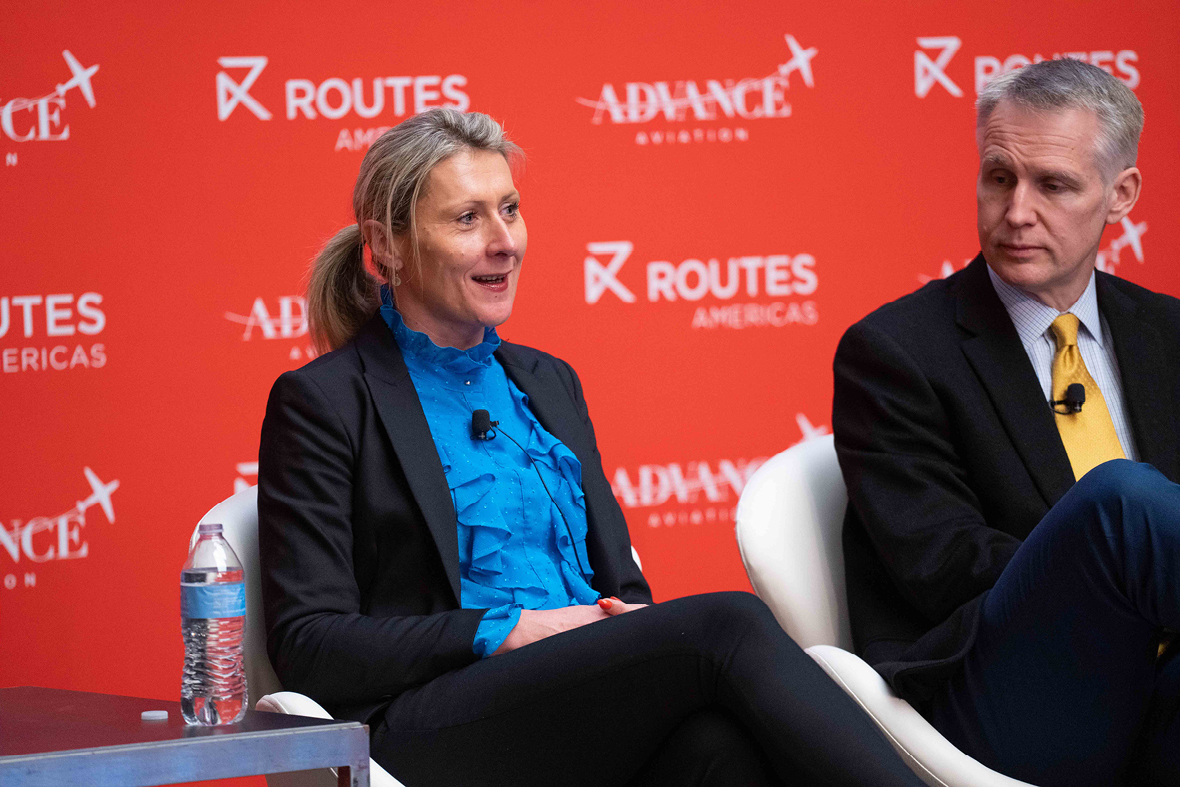The transatlantic airline market is the largest premium traffic market in the world and is expected to break records this year. The 2023 summer Atlantic forecast is for both total seats and flights to outpace 2019 levels, and the number of seats will be the highest in history if schedules hold.
While China remains a key question mark for many airlines, the Atlantic market is already booking solidly despite a surge in higher fares.
Delta is adding to its Air France and KLM alliances with new routes and better connectivity, according to Delta General Manager Network Strategy Colin Scott.
And American Airlines Managing Director Global Network Planning Jason Reisinger said his carrier’s network will use the long-range but smaller Airbus A321XLR as a strategic weapon across the Atlantic. “It’s like a Swiss Army Knife for all sorts of things,” he said. American has 50 A320 family aircraft on order in the extended-range ‘XLR’ configuration.
“We can fly to smaller cities in Europe that can’t sustain a [Boeing] 787,” said Reisinger. “I can downgrade a widebody to a more efficient A321 if the market changes or has a slow period.
“It’s a game changer. American loves the A321, and it’s a great airplane domestically too,” Reisinger said.
Virgin Atlantic, meanwhile, now has 70% of its capacity in the Atlantic market and has added 25% more premium seats into these routes, says Virgin Vice-President Networks Rikke Christensen. “We see a different pattern now, with bookings happening differently and passengers making longer stays. VFR [Visiting Family and Relatives] is resilient and strong, and the exchange rate favours the US market now,” she said.
Christensen said the importance of airport incentives as a key factor in airline route decisions is changing. “It’s not always about incentives,” she said, citing new-launch flights to Tampa and Austin. “The market needs to survive without an incentive.”
American’s Reisinger agreed. “Incentives will never get us to do something we wouldn’t otherwise do,” he said. “If there’s a US $1 million incentive – a long-haul flight can still burn through a quarter million dollars as the landing gear comes up every flight. [But incentives] with an organised community absolutely can make the difference, all other things being equal.”
“We are seeing really robust demand,” said Air Transat Chief Revenue Officer Michele Barre. “I wish I knew why demand is so high. Let’s hope it continues, but as you know in this business, you never know.”
Denver’s destination drive
Denver International Airport is riding the transatlantic capacity expansion wave, said the airport’s Laura Jackson, Vice-President Air Service Development. “In July 2011 we had two flights each day to Europe, and this summer that will be 11 daily. Denver’s transatlantic capacity is up 25% versus 2019. We’re really bullish on Europe.”
Jackson noted at Routes Americas that market analysis is changing, and previous data sets may not tell the entire story. “There are a lot of metrics we relied on in the past that are no longer giving us the same insight,” she said.
Aircraft flexibility is also helping one of Denver’s airlines. Icelandair is using a 737 Max during part of the year on Denver–Reykjavik, and a 757 when more capacity is needed.



